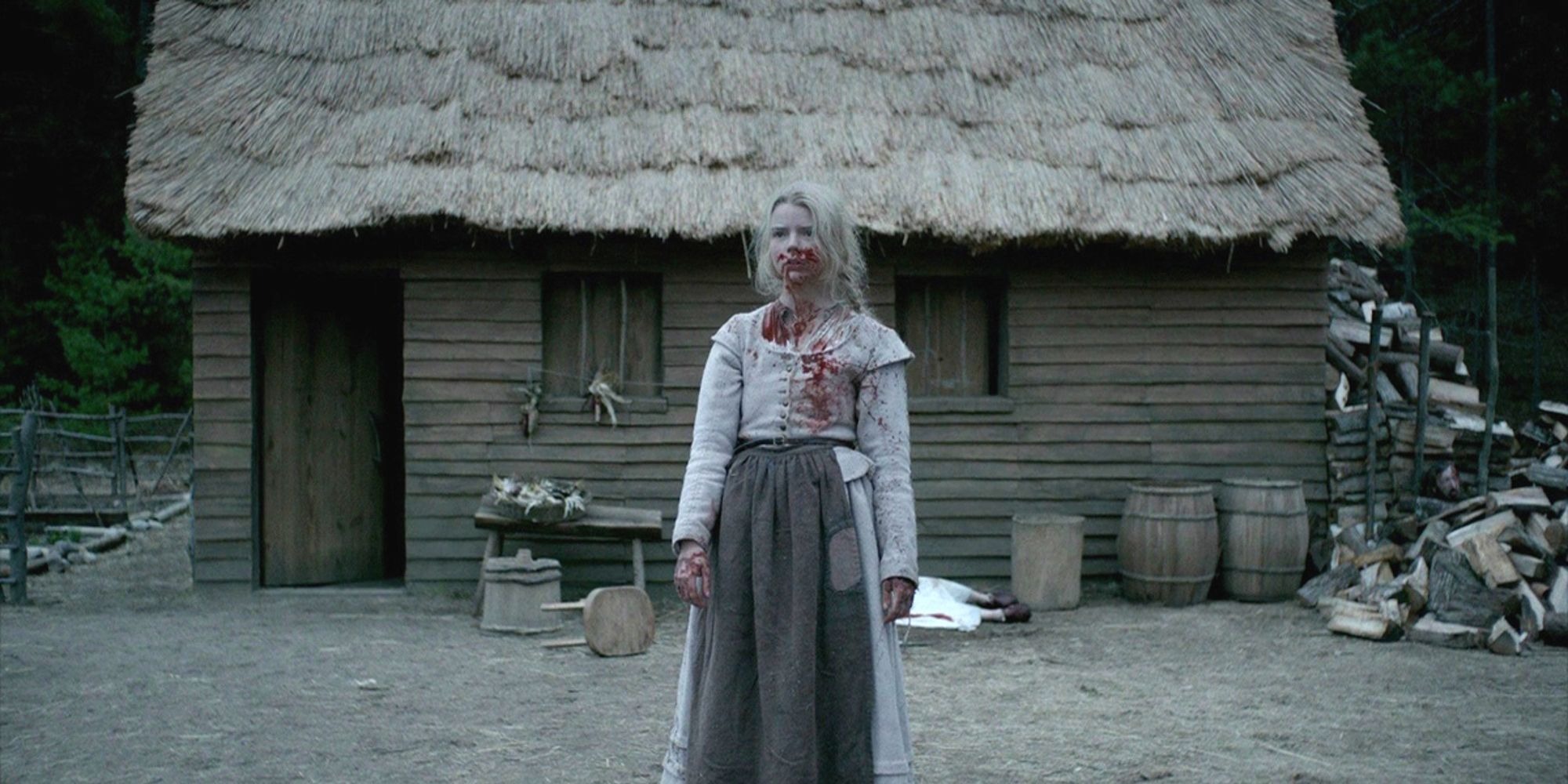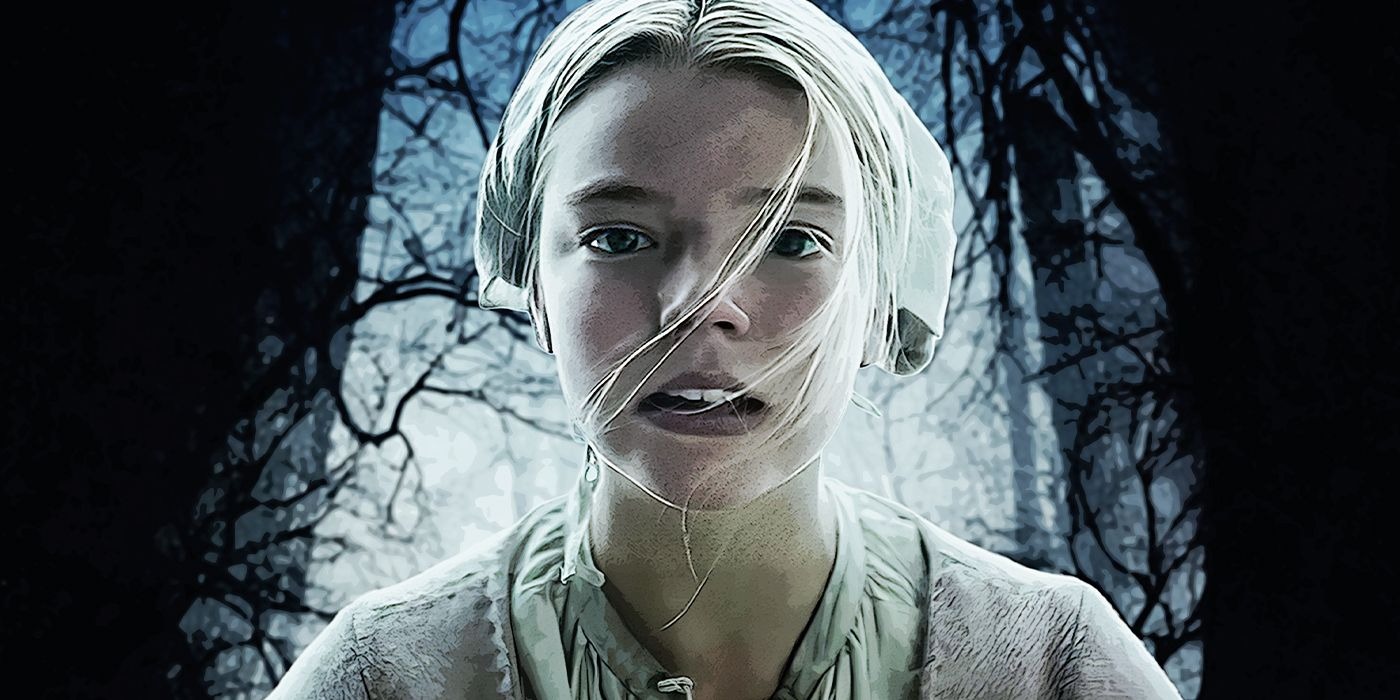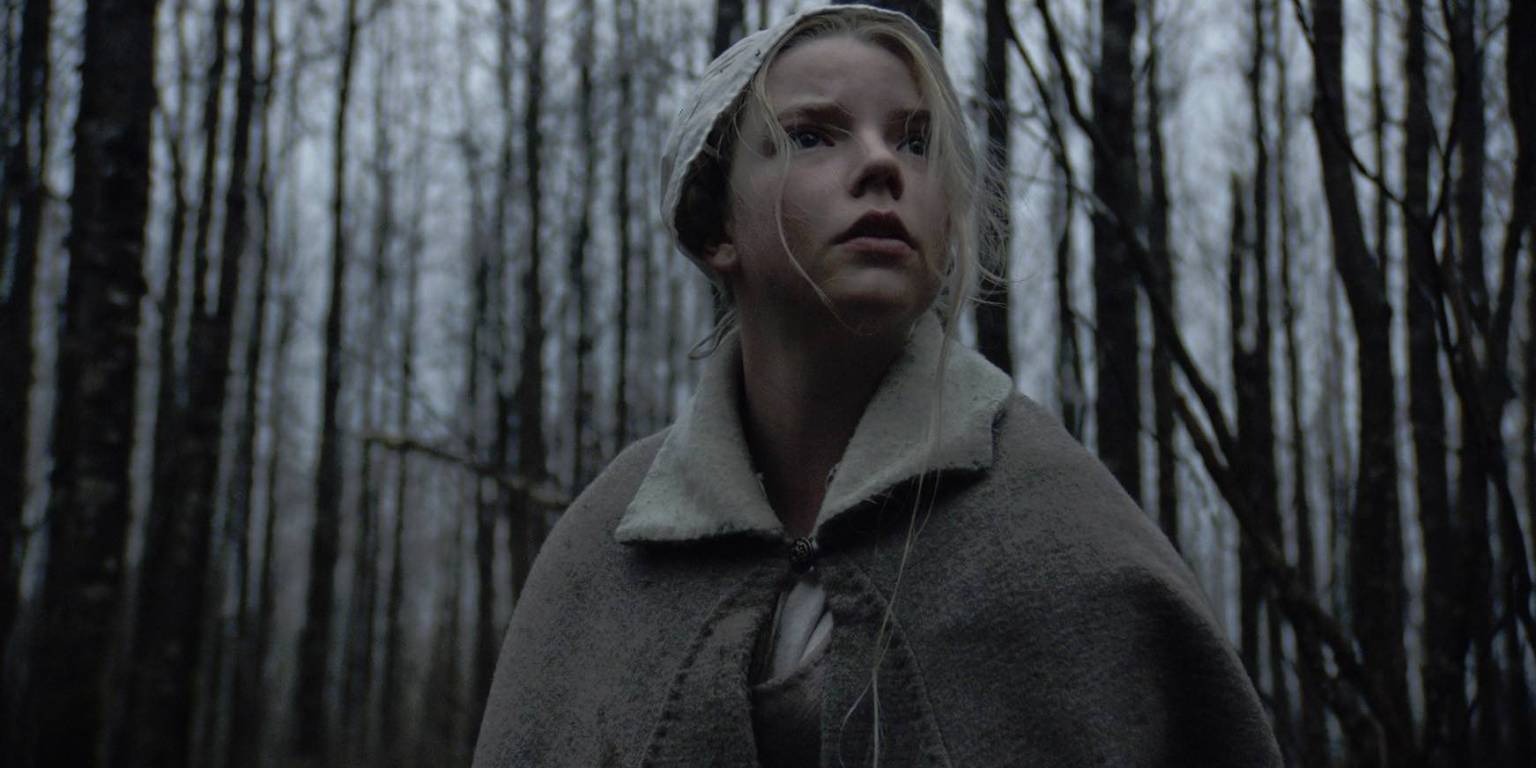In a remote location, a family led by settler William finds themselves banished from their colony. He, along with his wife Katherine, and their children—Thomasin, Caleb, twins Mercy and Jacob, and baby Samuel—struggle to adapt to their new surroundings.
One fateful day, while playing with Samuel, Thomasin loses sight of the baby, who disappears without a trace. Despite evidence of sinister forces, the family believes a wolf is responsible, leaving Katherine traumatized and unable to forgive her daughter.

As winter approaches, food becomes increasingly scarce. With a disappointing corn harvest, empty traps, and William’s inadequacy as a farmer, the family faces dire straits. Caleb ventures into the woods in search of game but soon goes missing as well.
Caleb reappears one night in a catatonic state, mumbling a twisted prayer, which heightens the family’s suspicions of witchcraft at play in the forest. Tensions escalate, resulting in accusations that pit family members against one another as unnatural forces begin to claim them.
Caleb dies after choking on an apple—a powerful biblical allusion. The twins, enchanted by the dark presence of Black Phillip, collapse and are never seen again.
William meets his end at the hands of the goat, buried beneath a pile of firewood, while Thomasin kills her mother. The film concludes with Thomasin joining a witches’ Sabbath dance in the woods, leaving viewers to ponder the nature of her reality.
The Witch (The VVitch): Authenticity
Set against the backdrop of early New England colonization, the film’s authenticity is evident in its setting. The primitive hovel, basic goat corral, and henhouse reflect the stark realities of the time, creating a genuine atmosphere. The challenges faced in achieving modern landscaping pale in comparison to the difficulties encountered by settlers.
Equally commendable is the film’s language, with the cast striving to authentically represent Early Modern English, reflecting the speech of the first Puritan settlers. The choice to title the film as The VVitch instead of The Witch reinforces this commitment to authenticity.
The portrayal of religious extremism among early Puritan settlers is embodied by William. In this period drama, religion permeates every aspect of life. Although his beliefs may appear extreme by today’s standards, William likely mirrored the fervor of many of his contemporaries.
An intriguing aspect of the film is its subversion of the archetype of the skilled frontiersman. William, as the family patriarch, is expected to be tough and resourceful.
However, his inability to cultivate crops or hunt effectively, coupled with Thomasin’s assertion that he is henpecked by his wife, presents a stark contrast to the typical depiction of masculinity from that era.
The Witch (The VVitch): Biblical Elements
Described as folk horror, the film intertwines folk storytelling elements with biblical motifs throughout its narrative. The family’s expulsion from their plantation parallels Adam and Eve’s banishment from Eden, while Caleb’s encounter with an apple tree that leads to his choking serves as another biblical reference.
Each family member grapples with their own sins, ranging from the father’s vanity to Caleb’s lustful desires. Thomasin’s evolution into a witch hinges on her liberation from the constraints of patriarchy.

The story begins with the sacrifice of the youngest child, Samuel, followed by Caleb, the eldest son. William’s demise at the hands of Black Phillip symbolizes the downfall of patriarchal authority, while Thomasin’s act of murdering her mother seals her transformation.
The VVitch (The Witch): Who is Black Phillip?
The character of Black Phillip, a black billy goat, embodies the archetype of the devil in folklore. His portrayal aligns seamlessly with the film’s themes of witchcraft and superstition.
Why is it called The VVitch?
The title VVitch reflects the Early Modern English spelling of “Witch,” underscoring the film’s commitment to authenticity in capturing the early colonization period of New England. The film also features elements of archaic pronunciation and language.
The VVitch (The Witch): What is it about?
At its core, the film explores the folk legends surrounding witchcraft in colonial New England, providing a unique perspective on common beliefs.
It showcases how an isolated, somber farmstead becomes a breeding ground for superstition and mass hysteria, leaving audiences questioning the reality of the supernatural elements presented.
The VVitch (The Witch): Why were they banished?
While the exact reasons for their banishment remain ambiguous, it is suggested that a religious dispute led to the family’s expulsion. William’s vanity likely contributed to his belief that only he could correctly interpret divine will.
The VVitch (The Witch): What did the witch do to the baby?
Interpretations of the witch’s motives for sacrificing the baby vary. One theory posits that she used the infant’s blood to rejuvenate herself, reflecting a common folk belief.
Alternatively, the depiction of witches as early feminist figures facing persecution could suggest that the sacrifice symbolizes a rebellion against patriarchal structures.
The VVitch (The Witch): What happened to the twins?
Though their fate remains uncertain, it is probable that the twins perished offscreen. Their baptism implies they were not ritually sacrificed like their younger brother, Samuel.
The VVitch (The Witch): What happened to Caleb?
Lost in the woods, Caleb encounters a beautiful woman who reveals herself as a witch. After being kidnapped and afflicted by an unknown ailment, he finally succumbs to his injuries a day later.
What does the ending of The VVitch mean?
The film’s conclusion portrays Thomasin’s transformation into a witch. While the nature of her experience—whether real or hallucinatory—remains ambiguous, the scene depicts a Witches’ Sabbath dance around a bonfire, aligning with traditional folk narratives.
Who was the witch in The VVitch?
Although the witch is portrayed by both Bathsheba Garnett (the older witch) and Sarah Stephens (the younger witch), the film leaves her identity ambiguous. By the story’s end, it becomes evident that Thomasin has joined a coven of witches.
The Witch (The VVitch): Conclusion
The portrayal of witchcraft in this film draws directly from traditional tales, serving as a period drama that emphasizes authenticity.
The atmospheric elements—cinematography, lighting, soundtrack, and color palette—create an immersive experience that transports viewers to a New England farmstead in 1630. This film is undoubtedly one worth experiencing.
What are your thoughts on the plot and ending of The Witch (The VVitch)? Share your comments below. Stacey is a freelance writer with a passion for pop culture, known for her attention to detail and storytelling abilities.
A super-fan of Game of Thrones, Cats, and Indie Rock Music, she often immerses herself in intricate films and literature. To learn more about her work and interests, connect with her on social media.



